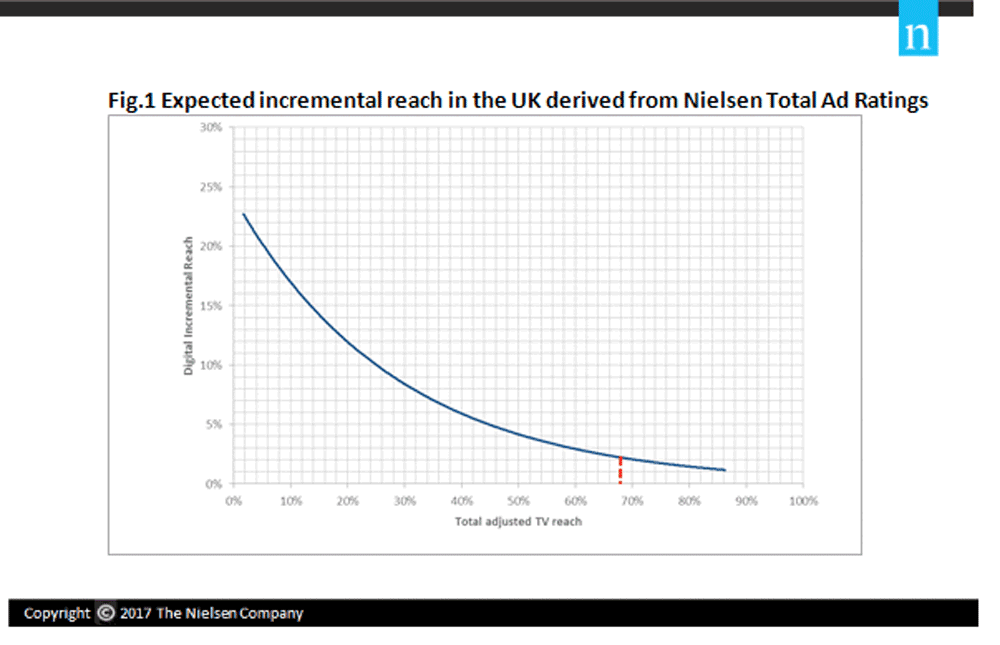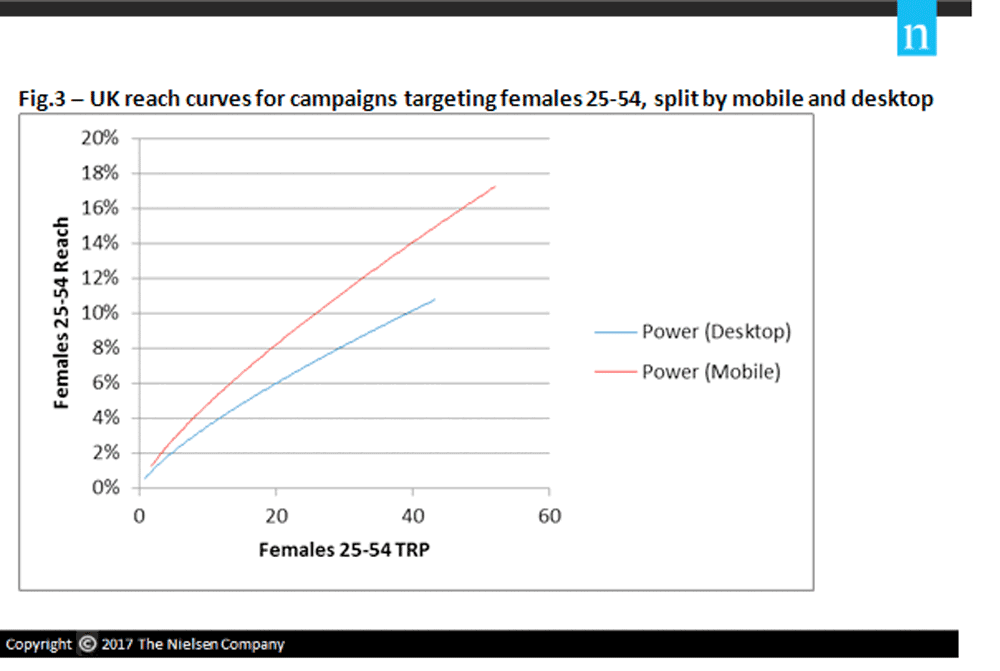Understanding cross media reach
January 21, 2017
![]() By Phil Sumner, Nielsen Client Business Partner
By Phil Sumner, Nielsen Client Business Partner
It is a truism that media fragmentation has created a headache for those buying and selling media, and for those companies like us who are responsible for measuring it. Twenty years ago, the world was a far simpler place for brand advertisers: TV was king and digital advertising was a merely a ‘fad’. Fast forward 20 years and we know that digital advertising wasn’t a fad, but TV is still king and although some budgets have migrated, its resilience is broadly steadfast.
TV advertising remains strong because it’s underpinned by reliable third-party measurement and can be trusted for predicting and delivering audience reach at scale. In short, we trust TV because it’s mature, solid and reliable, and while it may not be as dynamic as digital, it consistently delivers.
In an evolving digital era, it’s another truism that tried and tested channels are being challenged and brands are finding entirely new ways to reach consumers. Accurate, comparable measurement across TV and digital is key to fully recognizing how these platforms can interplay. Understanding the total audience of your advertising – and more specifically how to increase it – is one of the ways in which brands can unlock their growth potential.
Nielsen Digital Ad Ratings and Nielsen Total Ad Ratings identify the relationship between digital and TV advertising (Total Ad Ratings leverages Digital Ad Ratings as well as BARB TV data) by measuring the unique and combined reach of each platform. Since their launch in the UK (in 2012 and 2013 respectively) these solutions have helped numerous advertisers unlock their campaigns’ potential through a better understanding of how reach is delivered across devices.
Now that we have several years’ experience and scaled adoption, it’s a good a time to re-state some of the key reasons why we should care about measuring reach in the first place and share some insights from our ever expanding data set.
Reach: why should we care about it in the first place?
One of the fundamental laws of brand size is that big brands have larger customer bases. Nielsen’s consumer panel data backs this up, showing that brands with the highest market shares have much higher penetration and get purchased more often by their buyers. Smaller brands tend to be purchased less frequently and suffer from a pattern described in Byron Sharp’s ‘How Brands Grow’, as double jeopardy: getting hit twice with fewer buyers who buy the brand, less often.
The double jeopardy law, as described by Sharp, tells us that market share increase depends on growing the size of your customer base. Rule #1 of his seven rules for marketing is to “continuously reach all buyers of the brand’s service/product category with both physical distribution and marketing communications”. On this basis, mass marketing plans which maximize reach should provide the greatest growth potential.
Mass marketing techniques such as TV are effective at reaching large audiences rapidly but what about digital? Can it build reach as rapidly and as cost effectively as TV? Can digital add significant incremental reach, meaning reaching more potential buyers of your brand? Or can digital replace the reach provided by TV at a lesser expense?
The reality is that all of these scenarios are possible. We can only maximise reach across devices once we understand how the relationship works across devices. Only then can we start pulling the levers that will help unlock greater potential reach, and the potential for more prospective buyers to be exposed.
Great Expectations: What reach should we expect from TV and digital combined?
Based on our findings through three years of measuring cross media campaigns with Nielsen Total Ad Ratings we’ve seen an average of 4.4% digital incremental reach against TV. But in reality, a headline figure for incremental reach is largely meaningless.
Forecasting the incremental reach (of digital over TV) is complex as it depends entirely on the relative media weight of each platform. The chart below depicts a view of expected incremental reach figures based on our Nielsen Total Ad Ratings findings. In this example, a TV campaign accounted for 75% of the overall media weight and reached 90% of its target demographic. Once the TV weight is adjusted to 67.5%, the expected incremental reach is 2.5%.

This chart illustrates is that at its broadest level, the greatest determiner of incremental reach is the size of TV campaign. What is deemed as ‘good’ incremental reach from digital will differ markedly between campaigns based on media weight and, therefore, it’s important to manage expectations accordingly.
Is a digital only approach the key to unlocking growth?
The ‘shall we go digital only?’ question is posed frequently these days. It’s a fair question, but when digital and TV reach curves are analyzed side by side, the implications of a digital-only approach are clear, especially for brands which are existing heavy TV advertisers.

The example in the chart above compares a Nielsen Total Ad Ratings TV reach curve (derived from BARB data) to digital reach curves from Nielsen Digital Ad Ratings, split by display and video inventory.
The reach builds between them are apparent and, in this example, TV achieves higher reach than digital at all relative levels of media. Whilst there are examples of outliers and exceptions to these rules, the example shown is typical across our data set.
The implications are pretty fundamental. For brands currently high on the TV reach curve, a complete reallocation to digital may instantly create a ‘reach ceiling’; or it could mean that considerable additional impressions/ratings are required just to get back on parity with the reach lost from cutting TV. Both sub optimal positions.
Whilst a digital-only approach may well work for many brands, the key point is that brands must understand where they stand on their respective reach curves today and the implications on total reach by re-allocating spend between media types.
The reality for most brands is that using a combination of media types is the best way to maximize campaign reach within the available budget. Furthermore, beyond just the metric of reach, learnings from other fields of media research such as Neuroscience and Mix Market Modelling indicate that there are amplification benefits of multi-platform campaigns, so for most brands, an ‘all eggs in one basket’ approach won’t be optimal.
Can clever balancing of desktop and mobile achieve even greater incremental reach?
Mobiles are now the dominant digital device (2016 eMarketer report found that 54% of digital time is now spent on mobile) so understanding how the desktop and mobile reach relationship works may be another level to unlocking additional reach and growth potential. Through Nielsen Digital Ad Ratings we can see an emerging trend: mobile advertising is performing on a par with, or better than, desktop at delivering impressions to the intended audience.
Fig.3 illustrates this clearly, drawing on UK campaigns where females 25-54 were the intended demographic. What this shows us is that on average, over the first 40 TRPs delivered, mobile will deliver nearly 4% more reach than desktop. This is likely due to lower device sharing of mobiles compared to PCs. As opposed to being an afterthought, mobile may provide a powerful lever to creating steeper digital reach curves and greater total campaign reach.

Furthermore, we also examined over 200 UK campaigns measured with Nielsen Digital Ad Ratings which ran on both desktop and mobile to determine how the actual combined reach results compared to expected reach as determined by a standard probability formula. We observed that over ⅔ of the campaigns we measured achieved higher digital reach versus the predicted reach. This is important as it shows a real world pattern of greater reach delivery than what would be expected naturally; something likely down to the lower device sharing rate of mobile vs. the PC.
In short, getting the combination of mobile and desktop right could be the path to unlocking greater digital incremental reach. Like the TV and digital relationship, it’s not an either/or discussion but rather a case of finding the best combination to maximize reach potential.
Reach: team game not individual pursuit
Reach as a success metric is important; advertisers should place more emphasis on measuring accurately, fairly and consistently across all (especially digital) their media channels, to chart a clearer path to increasing overall reach and growth potential.
Reach is not the be all and end all of advertising measurement, and a better understanding of Reach should not come at the expense of measuring and harnessing metrics such as Viewability and Creative Impact (Ad Resonance). Reach is like getting the right players on the football pitch. Formation and tactics are hugely important to achieving success but are of diminished importance if not all the players are on the pitch.
Achieving optimal reach is actually akin to a football manager organizing his or her players in the best way possible to win games. A football team’s success is based not just on individual performances, but on the team working together in the most effective way possible. The key is finding the best combination of players to score goals and win games. Media is not really that different. Brands need to allocate their budget across their most efficient media partners. But marketers can only understand the best route to maximizing their team’s performance once they measure their players consistently and know how to put the best winning team on the pitch.






























